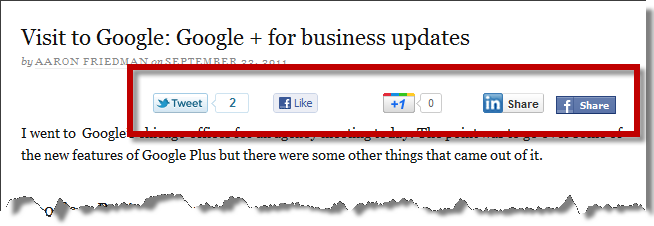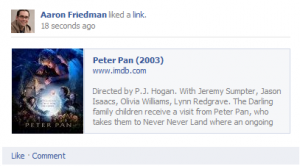Learn To Control Your Message With Social Sharing & Open Graph
Whether it’s optimizing a website, running a commercial or managing a Twitter Feed, controlling your brand’s message is crucial to ensure your audience hears what you intend. TheInternet has evolved and controlling your brand’s message is more important than ever in the advent of a social Web. Site Audit: Search For Social Before I begin […]
Whether it’s optimizing a website, running a commercial or managing a Twitter Feed, controlling your brand’s message is crucial to ensure your audience hears what you intend. TheInternet has evolved and controlling your brand’s message is more important than ever in the advent of a social Web.
Site Audit: Search For Social
Before I begin optimizing a website, I always do a thorough technical dive to understand the root of the problem. For example, I would never start optimizing a client’s title tags before I determined if they even had a place for them within their code, right?
Granted, the above example is a bit of a no brainer. Title tags are integral to any site optimization. The reason is simple. First of all, it’s one of the most important signals an engine looks at when determining what a page is about. And secondly, (and perhaps more of a practical reason), you can either let your users guess what each page is about, or you can put in a small 70 character description and tell them.
Social Media is no different and optimizing it seems to be constantly overlooked, which is a mistake. In a study done by ShareThis, they pointed out that Facebook accounts for 37 percent of traffic from shares using their social share buttons.
I suspect that most people don’t really pay much attention to optimizing their social media campaigns let alone ensure their sites are set up correctly to integrate with their social assets. This likely has a lot to do with a lack of understanding of exactly what parts of social ‘can’ and ‘should’ be optimized.
Let’s explore two easy social optimization tactics that can have a profound impact on your site: Social Sharing and The Open Graph.
Social Sharing
If you have your Social assets in place, there is no reason you shouldn’t be leveraging them on your site as well. Besides the fact that social shares provide an easy way for users to share your information with others, they also serve as a signal for the search engines as to the authority of your content.
The more shares you have, the higher your authority and credibility, and the more visibility you will have in the SERP.
Adding these to your site is usually as simple as downloading a plugin on your CMS or dropping in a line of code.
Social Graph & Social Sharing As One
This leads me to the Open Graph, because adding social share buttons also has a deep connection with the Open Graph. How you ask? If you have social sharing capabilities on your site, but do not have Open Graph tags, sharing will be hindered.
Let’s explore this
A question to start: Do you understand the open graph?
If not, I would start by reading about the Facebook Open Graph Protocol.
Essentially, the Facebook Open Graph gives full control to any webpage and lets the webmaster decide what information users will share across Facebook from their site. Rather than ‘Liking’ a page and leaving it to Facebook to decide what information to display, the open graph gives you the power to control how your content is shared by your users.
In this example, I liked the 2003 Movie Peter Pan on IMDB.
Each part of the snippet posted to Facebook, correlates with the Open Graph tags on IMDB’s site. Facebook is displaying exactly what IMDB tells them to display.
When pages are not tagged properly, Facebook algorithmically has to determine from other meta information on the page what to display, which can lead to a poor display of the information and lower overall engagement.
Does that sound familiar?
It should, because that is precisely what happens with search engines in organic results. If you don’t give them the signals they need, they choose them for you, which can also lead to a poor user experience and lower engagement.
It seems ridiculous to take that risk when you can fully control what is being shown.
The Need To Optimize For Social
Having the Open Graph tags on your site shouldn’t be treated as “nice to haves”. These tags are integral with how posts are displayed in your users feed.
Recently, optimizing around the social graph has become an integral part of how we (Resolution Media) approach content outreach. Ensuring these tags are in place gives you more control of what is shared and how it is displayed within Facebook.
Why leave your message to chance when you can control exactly what you want it to be?
Start implementing the Open Graph and social sharing on your site and take control!
Contributing authors are invited to create content for Search Engine Land and are chosen for their expertise and contribution to the search community. Our contributors work under the oversight of the editorial staff and contributions are checked for quality and relevance to our readers. The opinions they express are their own.
Related stories

